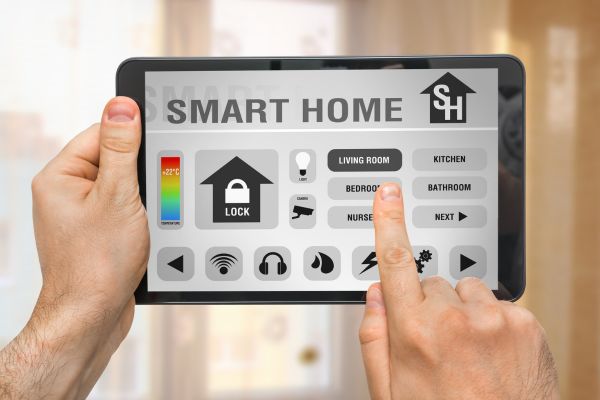The Power of Communication Technologies
Communication is the backbone of human interaction. Over the years, we’ve gone from using smoke signals to tapping screens. Today, the technologies used to communicate are vast, varied, and downright fascinating. Ever wondered how a simple text message travels thousands of miles in seconds or how video calls make distance irrelevant? Let’s dive into this topic and explore the tools shaping how we connect.
Evolution of Communication Technologies
Early Beginnings
Before Wi-Fi and smartphones, humans relied on simpler tools to relay messages:
- Smoke signals: Used by ancient civilizations to transmit warnings or announcements.
- Carrier pigeons: Trusted for centuries to deliver letters across long distances.
- Telegraphs: In the 19th century, Samuel Morse’s invention revolutionized how we sent messages.
Modern Innovations
The 20th and 21st centuries brought groundbreaking developments:
- Telephones: Alexander Graham Bell’s invention in 1876 gave people the ability to hear each other’s voices across vast distances.
- Radio and Television: These media became staples for broadcasting news and entertainment.
- Internet and Email: Enter the digital age, where communication became instant and global.
Key Technologies Used to Communicate Today
1. Mobile Phones
- The ultimate communication tool.
- Supports calls, texts, video chats, and social media.
- Smartphones combine multiple technologies, making them indispensable in daily life.
2. Social Media Platforms
- Tools like Facebook, Instagram, and Twitter allow real-time interactions.
- A blend of text, visuals, and videos connects users worldwide.
- Who hasn’t used memes or GIFs to communicate emotions?
3. Video Conferencing Tools
- Apps like Zoom, Microsoft Teams, and Google Meet have become vital, especially post-pandemic.
- From business meetings to family reunions, video calls are bridging gaps like never before.
4. Instant Messaging Apps
- Platforms like WhatsApp, Messenger, and Telegram offer quick, convenient communication.
- They support emojis, voice notes, and multimedia sharing for richer interactions.
5. Email Communication
- A professional cornerstone.
- Email remains crucial for formal communication despite newer alternatives.
6. Augmented Reality (AR) and Virtual Reality (VR)
- AR/VR technologies are enhancing communication in gaming, education, and remote work.
- Imagine attending a meeting as a hologram – the future is now!
How Technologies Are Shaping Communication
Enhancing Speed
- Technologies like 5G make lag a thing of the past.
- Faster internet speeds mean quicker uploads, downloads, and streaming.
Breaking Language Barriers
- Tools like Google Translate and Duolingo allow people to converse across languages.
- AI-based translation apps are making multilingual communication seamless.
Accessibility and Inclusion
- Speech-to-text and text-to-speech apps are empowering individuals with disabilities.
- Video calls with captions ensure everyone stays connected.
Challenges in Communication Technologies
No system is perfect, and communication tools come with their share of hurdles:
- Privacy Concerns
- Ever worried about who’s reading your texts or emails?
- Encryption tools like Signal and ProtonMail aim to address these concerns.
- Over-reliance on Technology
- What happens if the internet goes down? Many of us feel stranded without our devices.
- Digital Divide
- Not everyone has equal access to the latest technologies, creating gaps in communication.
The Future of Communication Technologies
Artificial Intelligence (AI)
- AI-powered chatbots like ChatGPT are redefining customer service.
- Predictive text and voice assistants simplify everyday interactions.
Quantum Communication
- Faster than fiber optics, quantum communication promises unparalleled speed and security.
- It’s still in development but could revolutionize how we connect.
Brain-Computer Interfaces (BCIs)
- Imagine communicating through thoughts alone. Companies like Neuralink are working on it.
FAQs: Technologies Used to Communicate
1. What are the oldest technologies used to communicate?
Some of the earliest tools include smoke signals, carrier pigeons, and the telegraph.
2. How do video conferencing tools work?
Video conferencing uses internet protocols to transmit video and audio in real-time, creating a seamless virtual connection.
3. Are communication technologies accessible to everyone?
While many tools are widely available, barriers like cost and internet connectivity can limit access for some.
4. What is the future of communication?
From AI-driven chatbots to brain-computer interfaces, the future looks futuristic and exciting.
5. How do technologies impact face-to-face communication?
Over-reliance on digital tools can reduce in-person interactions, but they also enhance connections when distance is a factor.
Conclusion: Staying Connected in a Changing World
Communication technologies have come a long way from smoke signals to holographic calls. They make the world smaller, bridging gaps and breaking barriers. However, as we embrace these tools, it’s essential to address challenges like privacy and accessibility. What’s clear is this: the technologies used to communicate will continue evolving, shaping how we connect in unimaginable ways.
Authoritative Links
- https://www.history.com/topics/inventions/telephone
- https://www.britannica.com/technology/telegraph
- https://www.wired.com/story/the-future-of-communication/



